In Portugal, a collection of 2,000 drinking vessels reflects 9,000 years of history
The world's most extraordinary private collection of drinking vessels and the stories behind them.
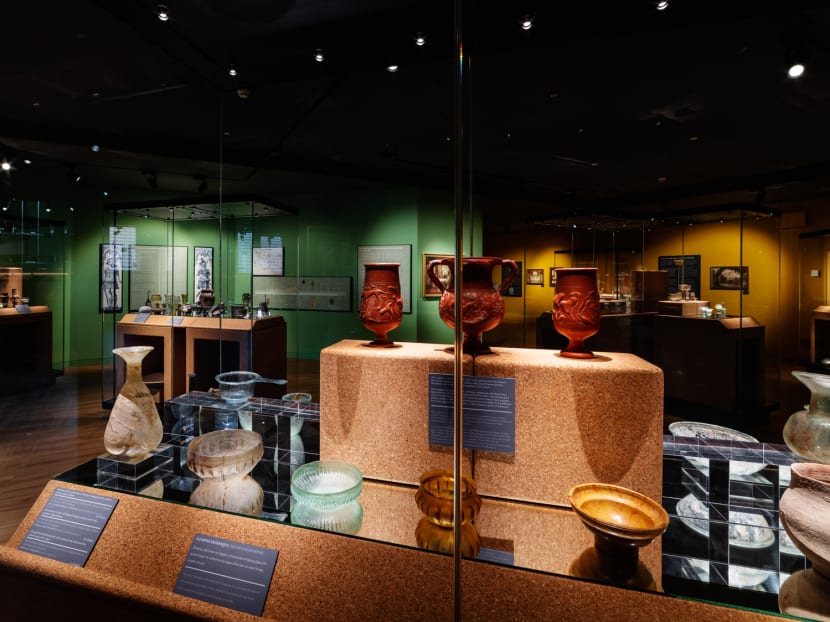
A part of the Bridge collection (Photo: World of Wine)
Clinging to the hillsides of the Douro river some 320km north of Lisbon, Portugal's second city of Porto is one of a handful of places which have given their name to a wine. Shiraz in Iran and Bordeaux both come to mind, but the UNESCO World Heritage Site of Oporto ‒ as the Portuguese know it ‒ is arguably the most intrinsically linked.
Nowhere is that more obvious than at World of Wine, known as WOW, a remarkable collection of seven immersive museums, a wine school and 12 places to eat and drink, all housed in restored Port wine cellars. It sits just yards from the Douro riverside as the consumption of Port wine would have been impossible without local boats known as rabelos. They took barrels from vineyards in the Douro region to the city, where they were then aged in vast warehouses before they made their way by ship to England.
It is said that the creation of Port wine was a happy accident when, in the 17th century, two English brothers added grape brandy to local wine to fortify it during the long trip. What's more, when Britain was at war with France ‒ a not uncommon state of affairs ‒ French wine would be boycotted, meaning that Port wine was often flavour of the month.
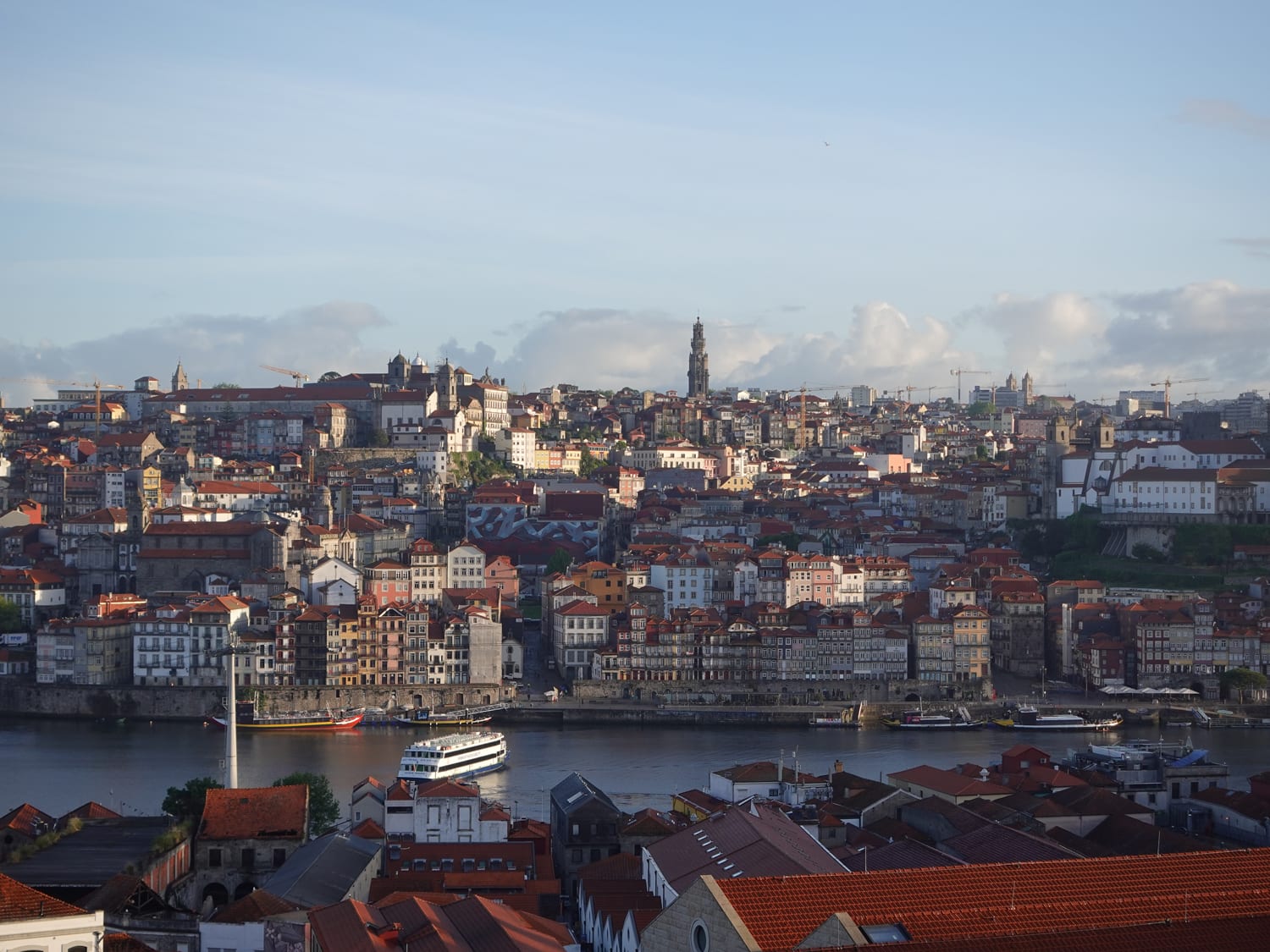
My immersion into the history, culture and appreciation of wine ‒ in all its forms and from all around the world ‒ comes at WOW. It includes a visit to a brilliant cork museum, which reveals why there is so much more to the humble bark, now claimed as a sustainable marvel across a myriad of purposes and industries. I chart the Douro's remarkable terroir where vine roots can reach 30 ft (9m) underground in soil called schist, then discover which grape I am most like ‒ a Pinot Noir, apparently. But nothing could have prepared me for visiting The Bridge Collection.
It is both the personal collection of and named after Adrian Bridge, the mastermind and CEO of WOW and also The Fladgate Partnership who own 14 wine estates including the storied Port wine producers Taylor's and Croft, four luxury hotels, restaurants and more. To get a one-on-one tour with the man himself reveals his impeccable aesthetic judgement, dazzling breadth of knowledge ‒ and definite penchant for a story.
He explained: "The Bridge Collection is 9,000 years of drinking vessels, telling the story of mankind and its association with alcohol. I've tried to choose things that are iconic in terms of telling a story, or pieces that are extraordinary in terms of aesthetic."
As one of Europe's leading figures in the wine industry, the logic of collecting drinking vessels was clear, but he had other, simpler motivations: “It seemed quite fun ‒ it wasn't intended to end up quite as serious as it is! I'd originally bought to be able to use old glasses for dinner parties, to give people Port wine in a Roman glass but it didn't work. People get scared about picking them up, worrying will it be broken, then you've got to wash them yourself. So it looks like it grew from that into a museum!

He sources from all over the world, through auctions and dealers in New York, Zurich, Paris, Lisbon, London. Two key criteria are that everything is for or associated with drinking ‒ and that it has been used.
“Pretty much everything in here is a drinking vessel. There are a few things associated with drinking that aren't vessels, per se, but they tell a bit of the story. The second thing is that pretty much everything in here has been used, from peasants to princes.”
I start by asking him whether he has a favourite piece. I quickly discover it's an impossible question, such is his passion and knowledge.
“It's difficult because I like all the pieces which have got stories and because there are some really quite important pieces, historically important bits,” Bridge said.
That's something of an understatement, as just a selection of the highlights are a dazzling testimony to his eye for history, beauty ‒ and the people behind them.
CHINESE NEOLITHIC LONG-STEMMED CUP
The Neolithic Dawenkou culture was named for Dawenkouzen in Shandong Province. Their lifestyle was based on agricultural subsistence, but the elegance and extreme thinness of this pottery suggests thay it was used for ritual, not everyday use.
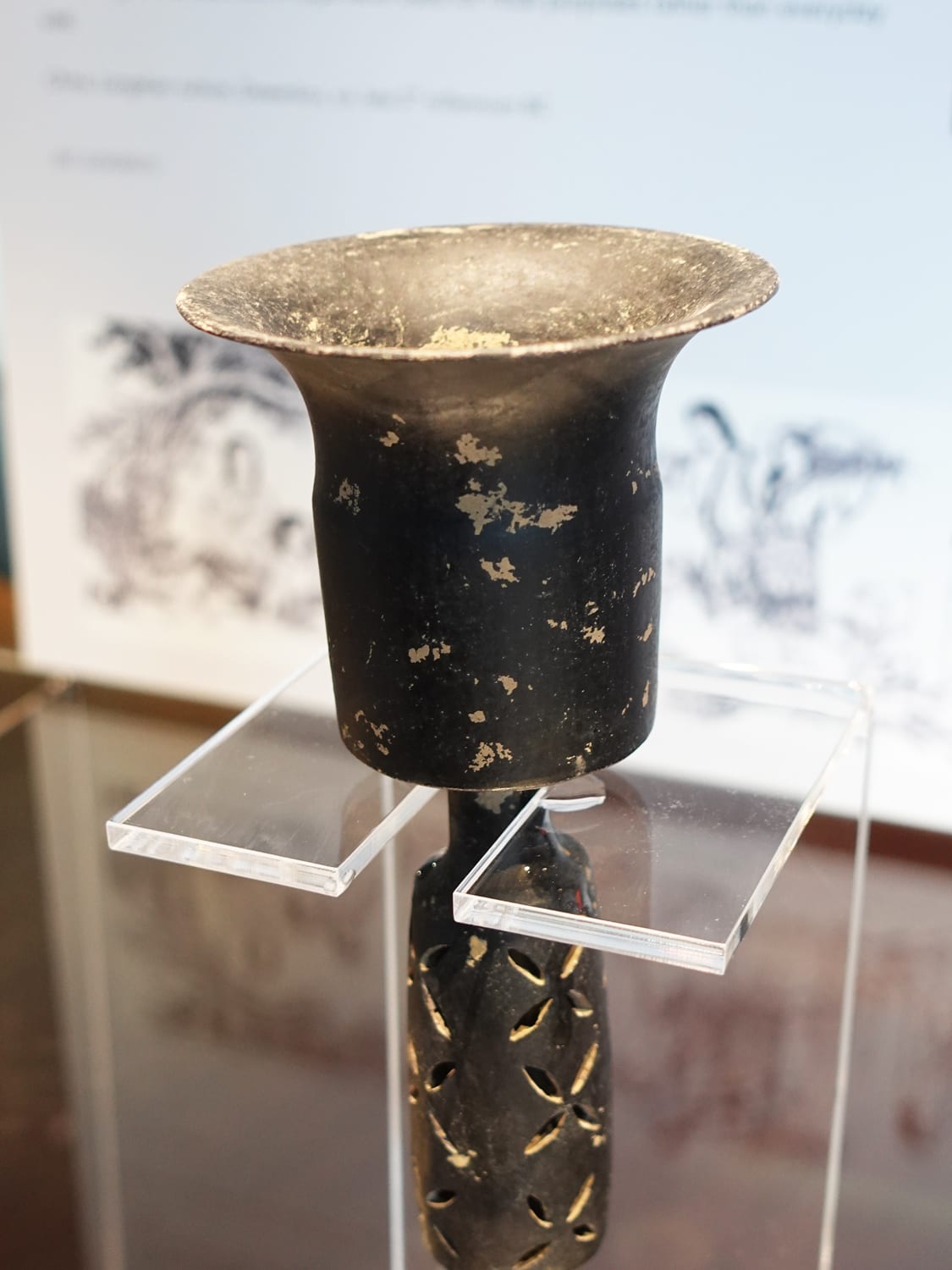
“This one is amazing, it's about 5,000 years old. It's called eggshell pottery. Firstly, it's recognisable as wineglass and secondly, if you think about whoever put it together, they thought very hard about this because the stem is big enough and easy to hold. The fact that it's very thin and forms this lip also means it's easy to drink from. It's extraordinary because we have this temptation to think we're very sophisticated now and that in the past, people lived in the woods and couldn't do anything, and yet you come up against pieces like this and go 'wow'. Could we actually make that today?”
SYRIAN 13TH CENTURY LUCK CUP
The term ‘luck’ for a cup came from northern England and denoted exotic vessels which could possess talismanic powers. This comes from Syria, from around 1350, with decoration in red, white and blue enamel and gold enamelling. The image on the glass itself shows a man holding a conical glass, underlining the importance of drinking in Medieval times.

JOMON TERRACOTTA VESSEL, 7,000 BC
This large pottery vase with rudimentary cord markings was used to mix wine with water. The wine would then be served in smaller vessels.
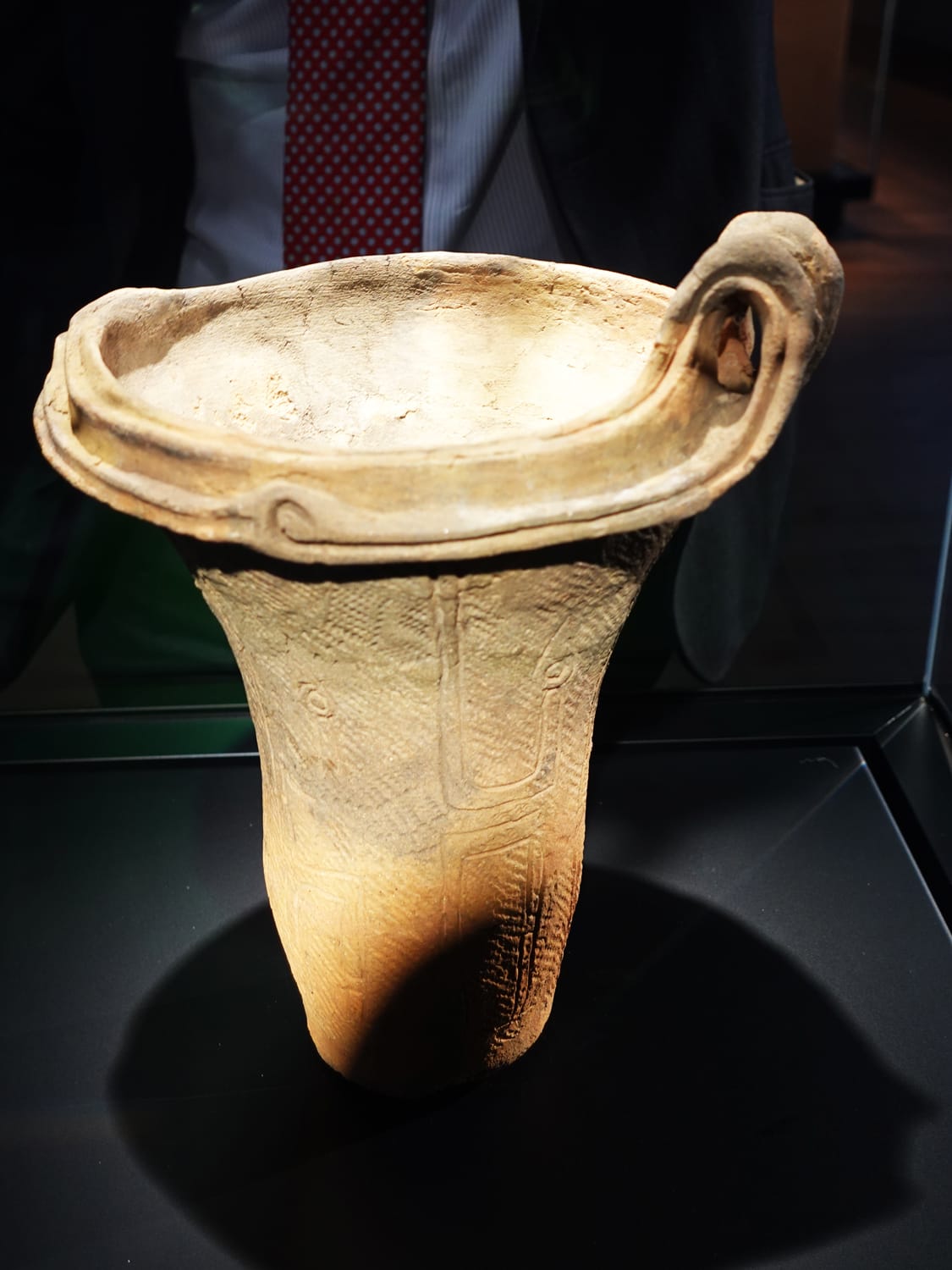
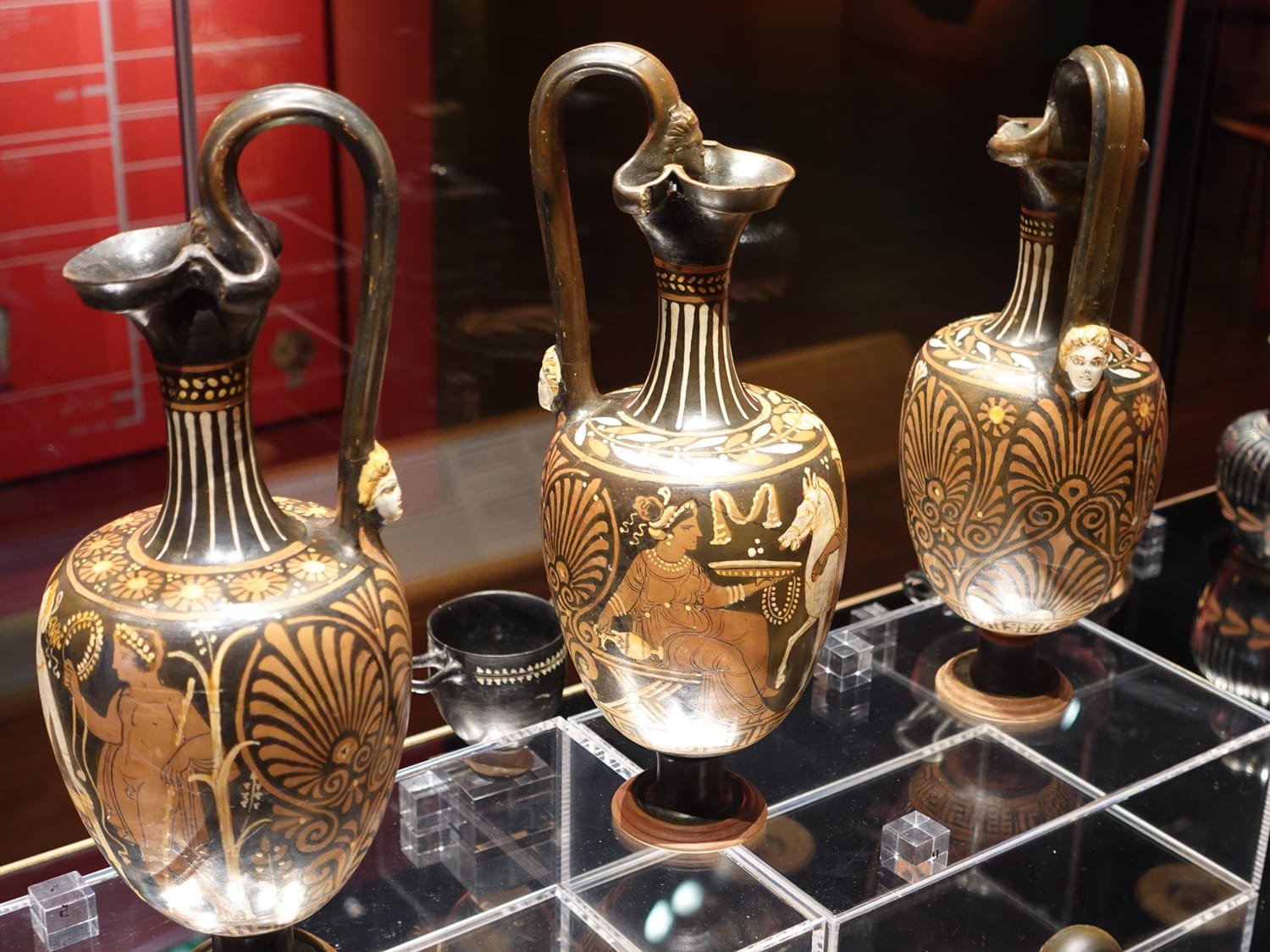
ALEXANDER THE GREAT BRONZE KYLIX
Alexander III of Macedon was better known as Alexander the Great. He was tutored by Aristotle as a child and succeeded his father to the throne. This bronze kylix ‒ a type of drinking cup ‒ was found in the royal tombs at Vergina in Macedonia. They were placed besides the dead as a symbol of wealth and luxury and also used in the 'symposium', essentially a ritual drinking party for elite Greek men.
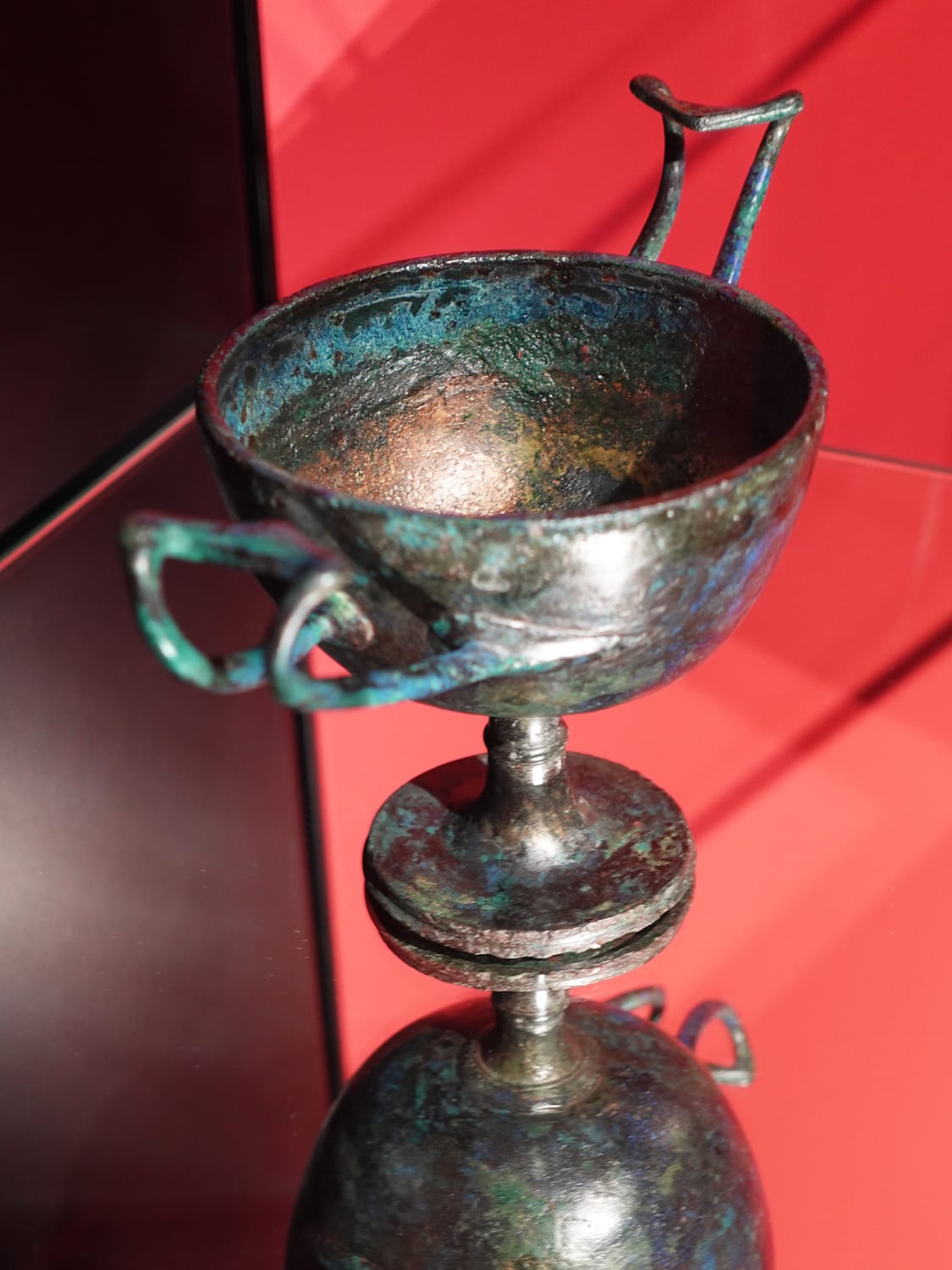
“This is a bronze from Alexander the Great (336 BC). When we restored it, we discovered mud inside it and in that mud we discovered gold. Remember, Alexander the Great was a big drinker. He murdered a friend of his in a drunken brawl at the age of 33, in part because of all that booze.”
14TH CENTURY FRENCH SILVER BEAKER
“This silver beaker is the earliest piece of secular silver from Amiens in France, made in 1386, sold to me by Christie's. It's silver with gold inlay, in the gold, it has the lettering which reads 'Prenés en gré' or 'receive with pleasure', an extract from a poem by Christine de Pisan published in 1394. Most of these didn't survive as the silver got beaten down and the silver got repurposed.
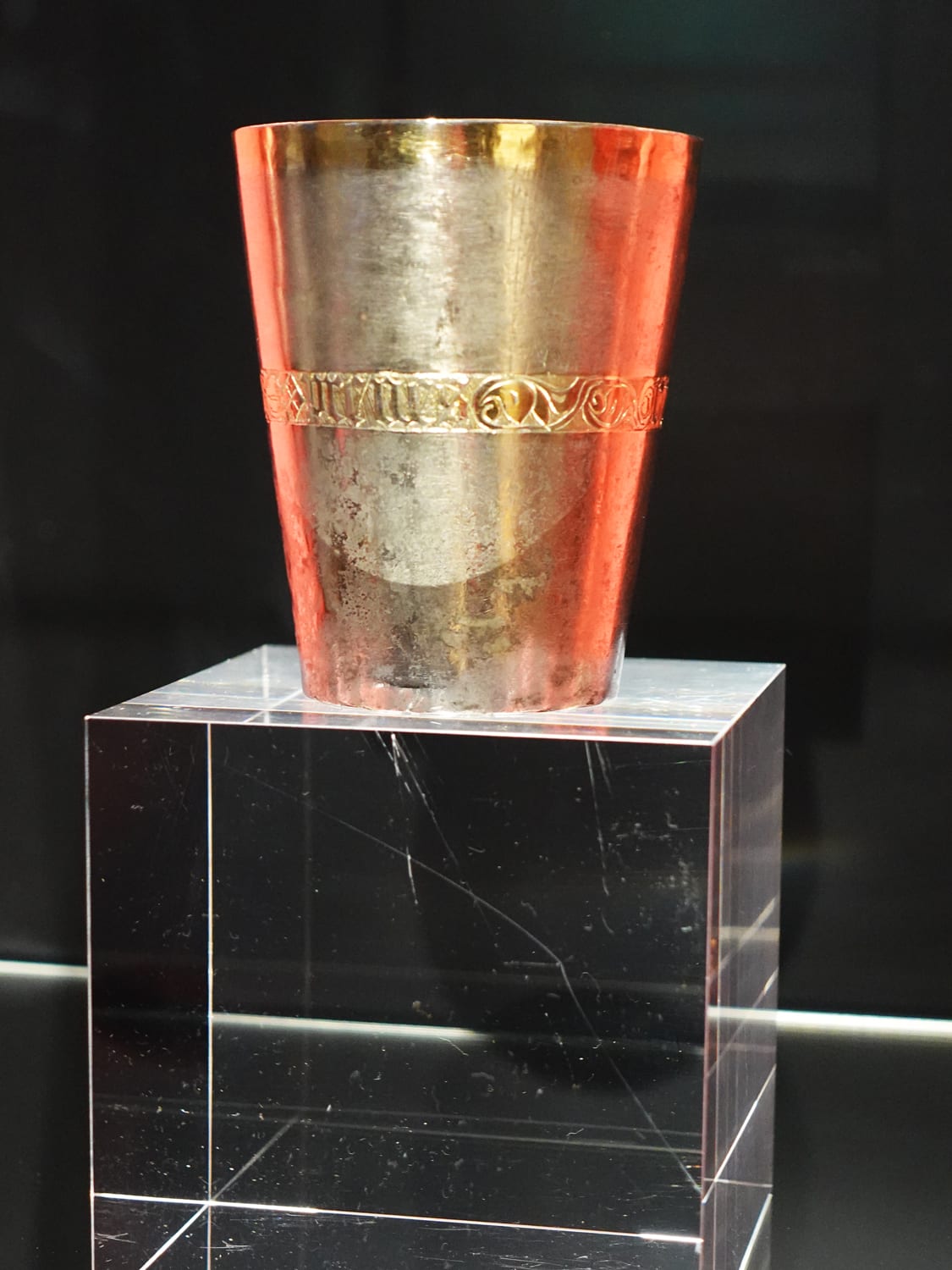
Christine de Pisan was the daughter of the chief adviser to Charles V of France, Charles the Wise. That's probably why this survives. She is considered the world's first feminist, essentially, so with this we're late 14th century, she's a woman of letters, a woman who's writing poetry with royal connections and that is being transported on to a silver beaker, put on in gold. Used for consuming wine, the beverage reserved for the elite, particularly at court, from an historical point of view, this is really quite important.”
THE BATTLE OF WATERLOO VICTORY GLASSES
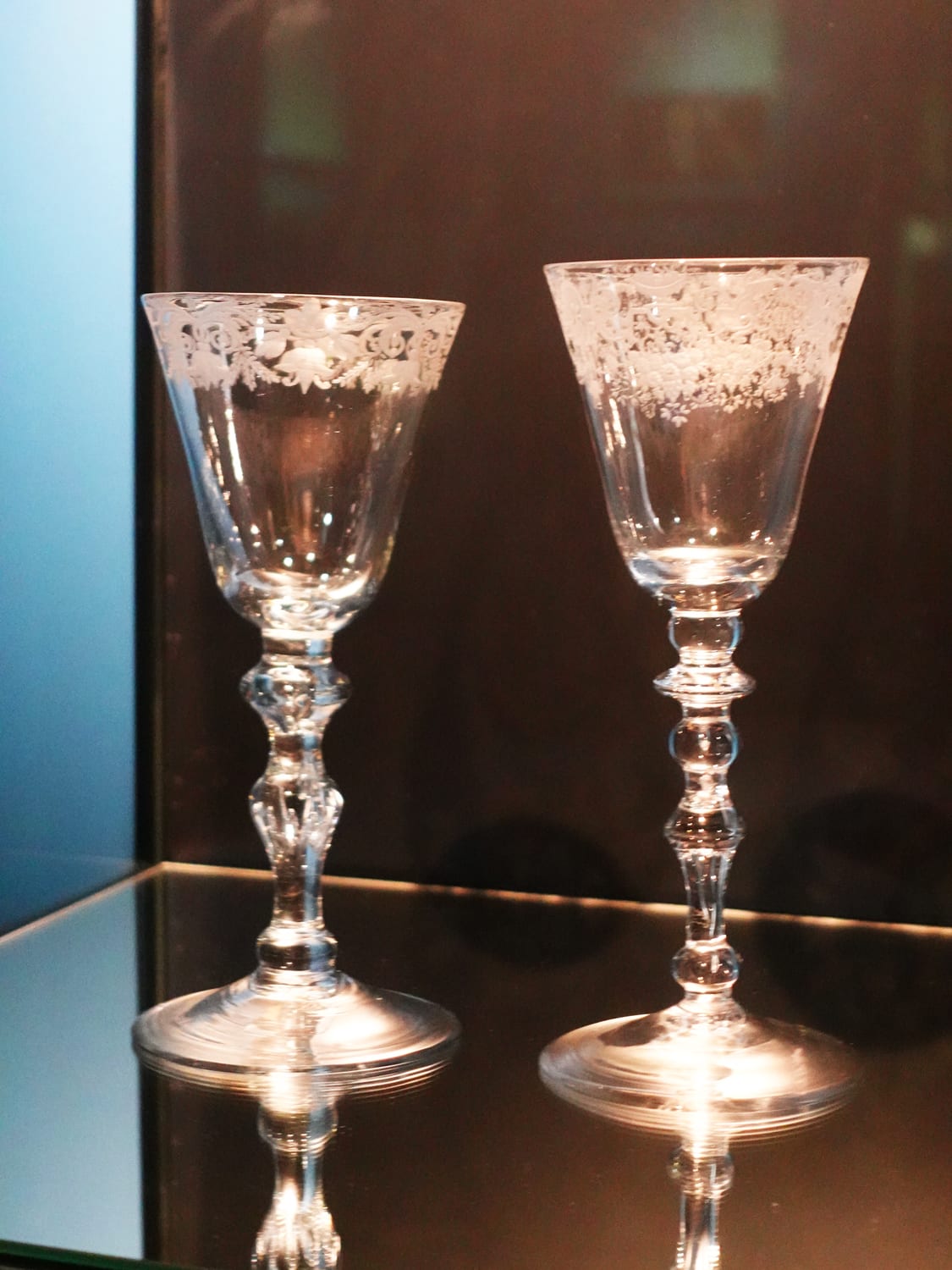
“These came from a sale in 2015 in London. They are the glasses used by the Prime Minister Lord Liverpool and Lord Bathurst, the Minister of War, following the end of the Battle of Waterloo in 1815. One of Wellington's men, Aide-De-Camp Major Henry Percy rushed back to London to the Prime Minister to give the news that Napoleon had been defeated. The Prime Minister and Minister of War drank toasts to honour the victorious, blessing God, the King and the dead.”
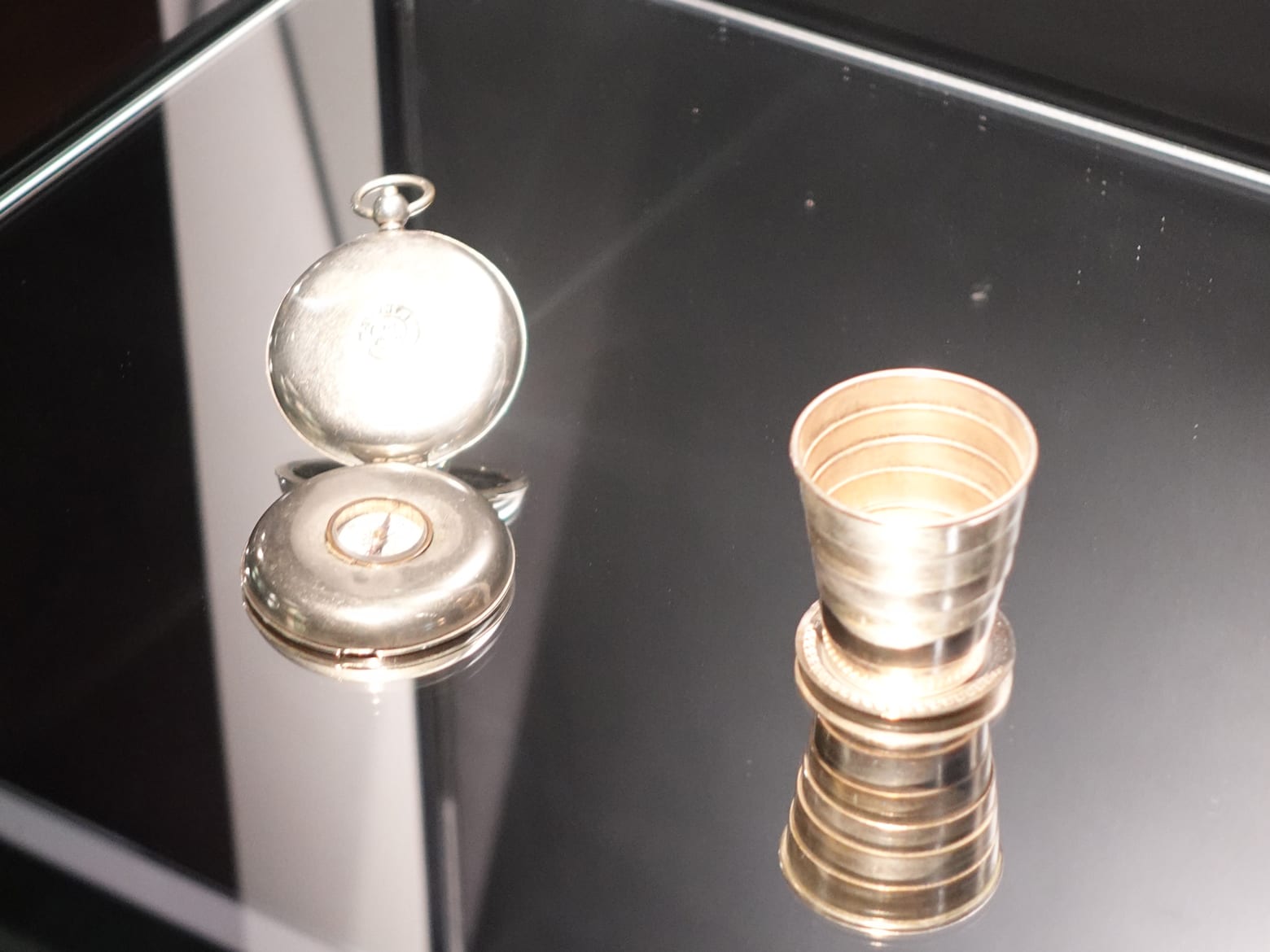
“I love this for its simplicity. From the first world war, you can see this being sent to somebody on the front. It's a collapsible cup which folds in on itself and goes inside this on a watch chain with a compass. This is emotionally powerful ‒ and a £25 (S$40) investment by me. Not an expensive piece, but you can see somebody sending that to the loved one and I love the symbolism of the little compass, saying 'come home safely'. Pull it out, open it up, have your tot of whisky to look after yourself ‒ and think of us. Just that connection, that this was in the mud of the first world war. This is hugely emotionally powerful and probably the cheapest thing in the entire collection.”
The Bridge Collection can be seen at World of Wine in Porto, Portugal. For more information, click here.

















